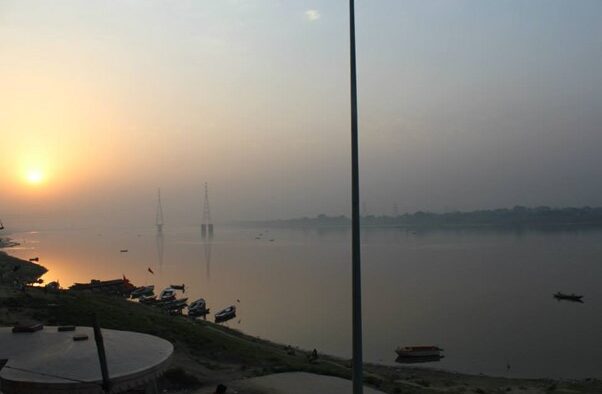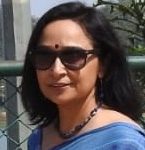On the occasion of teachers’ day let us pay our respects to the city of Varanasi. we should remember this city on September 5, a day dedicated to teachers, when it has given us the best of teachers since times ancient! Indians and non-Indians have found refuge in this ancient city as they explored the deepest secrets and the wealth of the knowledge of India.
Foreigners have come in droves to Varanasi, largely in search of Indian teachers who have made it their home. A study published in Springer magazine - When the Ghats Call: An Exploration of the Spiritual Identity Development of Non-Indian Visitors in the Landscape of Varanasi, involved in-depth interviews with twelve non-Indian nationals who identified themselves as spiritual. “After thematically analyzing the transcribed interviews, it was found that spiritual identification, worldview, and practices were constructed and refined as a result of interaction with the physical, religious, sociocultural, and historical dimensions of the landscape of Varanasi. Findings suggest that individuals coming to a foreign landscape are more than backpackers and undergo unique spiritual identity development journeys. “
Divya Prabha (Lucy Guest) studied at Oxford University UK, in Metallurgy and the Science of Materials and after some years of working in the City in London and on Wall Street for American Investment Banks, she changed the course of her life by leaving the UK with Brahmrishi Vishvatma Bawraji Maharaj. She continued to learn under Swami Yoganand Parivrajak and came to Varanasi in 2006 to embark on Traditional Sanskrit Studies at Sampurnanand Sanskrit Vishwavidyalaya, Varanasi. “The real beginning in this life started with a life changing experience in meditation in 1999 which then brought Sanskrit mantras and Patanjali’s Yoga darshan into my life. There was a never a conscious decision to study Sanskrit because for me it was part and parcel of practice,” says Divya when asked when she decided to learn Sanskrit.
Filmmaker Akanksha Joshi in her film: Hindu Nectar: Spiritual Wanderings in India (Full Movie) (https://www.youtube.com/watch?v=zLvr80ZrCqo) talks about the attraction of India to foreigners, especially at the Ghats of the Ganga. The transcendence of life and the feeling of continuity and not being stuck is what comes as a revelation as the Ganga Arathi is witnessed firsthand.
Dr. Mark Dyczkowski is a scholar and author of Tantra and Kashmiri Trika Shaivism and has studied in India. Both a scholar and a practitioner, he was initiated by the great Indian teacher Swami Laksmanjoo in the year 1976. From the eternal city of Kashi that has no aadi or anta, where Shiva is the Mahadeva, the city which rests on his Trishul, where Ganga flows north to be with Vishwanath, to such a city came a young Mark in 1970 because he wanted to be with Shiva consciousness. Shiva the lord of nada and the deva of Kashi. Shiva, Bhairavi and Kashi all come together in this piece rendered by Mark Dyczkowski: https://youtu.be/6Q66HfC7x0s.
Let us pay homage to the most magnificent city on earth and unveil its other avatar – ‘The Great Teacher Kashi!’
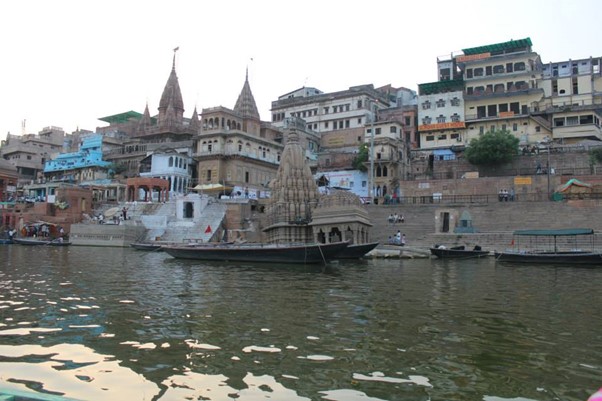 Photo by Aparna Misra
Photo by Aparna Misra
The city that tamed Ganga has groomed many teachers to provide direction to restless minds for centuries.The mighty Ganga flowing across her heart has sustained many gurus and acharyas known and unknown. Kashi like a Param Guru opened her arms and welcomed allon straw mats spread in the ashrams sustained by the river that was tamed by Shiva. Varanasi was a centre of Vedic learning and the Mahakavyas of Upanishads were discussed threadbare in ashrams in and around the city.
It was also an important centre of learning for Ajivikas and Jains. Four of the Jain Tirthankaras were from here and Parsvanatha next in importance to Mahavira was born in in this ancient land. He had propagated non-violence, non-possession, non-stealing and non-lying, the four restraints by which individuals should lead a life of rightful conduct.
That was the time when young Siddhartha appeared on the horizon, on a quest to find answers to end sorrow and the sufferings of the world. The enlightenment he experienced at Gaya was shared to the world as Dharmachakra Pravartan Sutta, at Sarnath. Sarnath was chosen because Varanasi was at the zenith of intellectual learning. There was no place better to challenge the prevalent intellectual traditions of the day and get the stamp of popular approval.
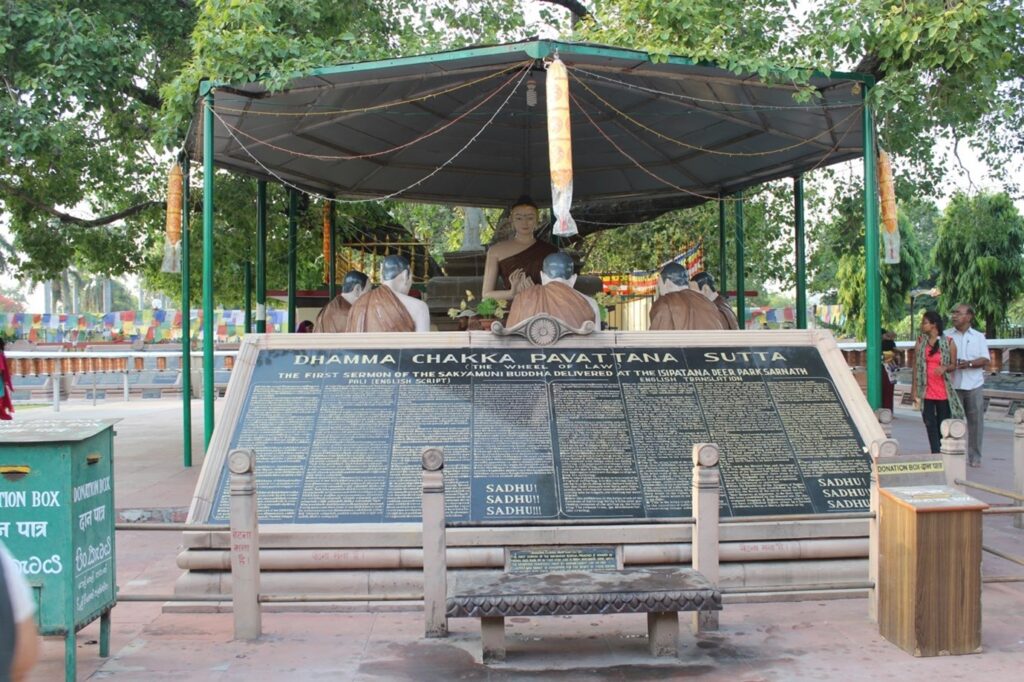 Photo by Aparna Misra
Photo by Aparna Misra
Siddhartha had become Buddha; he could have forsaken everything to stay in the blissful state but he chose to be a teacher. The simple teaching of compassion and kindness resonated with many and it still inspires millions with hope of salvation.
Different schools of thoughts and their leaders belonging to the Vedic school or the Sramana schools had traversed the intellectual mindscape. Yet, no single teacher exercised ideological hegemony. Every epoch had witnessed a churning of ideas and stabilizing of the old ones.
New ideas took root and old ones branched out profusely.The dialectical pattern of learning saw one more entrant. If Vedic learning was the thesis and Sramana traditions the anti- thesis, synthesis came out of the work of Adi Shankaracharya. The questioning Chandal helped Shankara embrace Advaitism in totality. The lord of Kashi disguised as the lowborn opened Sri Shankara’s eyes to nonduality. Sri Shankara’s replies formed ‘Manishapanchakam’ a handbook for understanding Advaitism in five verses.
If there was Advaita, could Vishishtadvaita be far behind? Ramanuja’s Vishishtadvaita was popularized by Ramananda. He attempted the synthesis of Advaita with Vaishnava bhakti traditions and in turn inspired the Saguna, Nirguna worshippers of North India.
As has been the tradition of our country, philosophy and religion walked hand in hand. Acharyas from all ages, seekers of truth, individuals on a quest have always sought guidance in Shiva’s town. Every intellectual traditionof the day, every sect had its followers. The place encouraged a dynamic exchange of ideas and the resultant was a unique culture of learning, tolerant and liberal.
Even a perennial river might become moribund and shallow.The intellectual environment of Kashi likewise had become sterile. It had lost its connection with the masses in face Mamluk invasions, the ones who established the Ghurid empire in India. Islam was religion alien to the land. The temples and viharas fell silent in the face of the rabid onslaught.
 Photo by Aparna Misra
Photo by Aparna Misra
In Kashi’s darkest hour a weaver’s son, Kabir appeared imploring the masses to stand up for themselves and to find God on their own. He implored them to live by the two and a half letter word - Prem (love). Such was his hold over the masses that the rulers of the day were baying for his blood but he continued to preach the message of Nirguna Brahman through his layered verses.
While Kabir was spreading the message of Nirguna God, Tulsidas brought Ram closer to masses as Saguna God who could lead men to salvation through intense devotion. Ramcharitmanas was written in the language spoken by the masses. Even after hundreds of years it continues to rule the psyche of the Hindi heartland.
The learning curve was to receive yet another jolt with the coming of British. The missionary zeal stifled the intellectual atmosphere. The support for native ideas dwindled as the patrons lost power and religion itself was threatened by an alien contender. The collective of acharyas and gurus fell silent. The missionary schools threatened the traditional institutions.
The city charmed the British with its most powerful offering - Sanskrit! The British established the Sanskrit College in 1791 for the development and preservation of the Sanskrit language. The college became a path breaking centre for Sanskrit learning and by default of Indology.
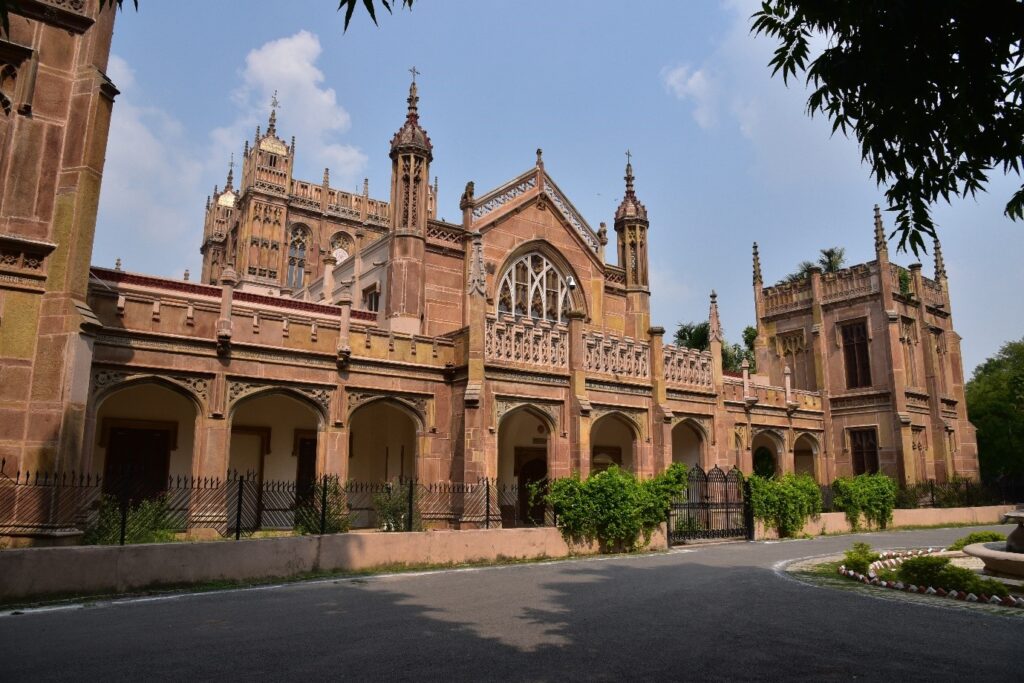
Sanskrit College – Photo by Nirdesh Singh
Varanasi in the early twentieth century was set to soar high. A new wind was blowing fanned by the freedom movement and the subsequent emergence of pride in Indian traditions. Annie Besant and her philosophy were to inspire two different teachers who would establish different systems of learning in Banaras.
J Krishnamurti often stated that the purpose of education is to bring about freedom and love, “the flowering of goodness” and the complete transformation of society. The Vasanta college at Rajghat owes its inception to Annie Besant but it is Krishnamurti’s philosophy of education that guides the institution. Rajghat Education Centre (REC) was established in 1928 by Krishnamurti due to the efforts of Benegal Sanjiva Rao, a theosophist deputed by Annie Besant to work with Krishnamurti, to acquire lands in the Rajghat area next to river Ganga. Benegal Sanjiva Rao suggested Himalayas as an ideal location to Krishnamurti. But the ancient seat of learning called out to Krishnamurti and he instructed Benegal Sanjiva Rao to buy 400 acres of land in Varanasi.
REC was founded with the aim of bringing about a radical transformation in human consciousness. While imparting academic proficiency, the schools attempt to awaken intelligence and sensitivity in the child in a non-competitive environment (source https://www.rajghatbesantschool.org/)
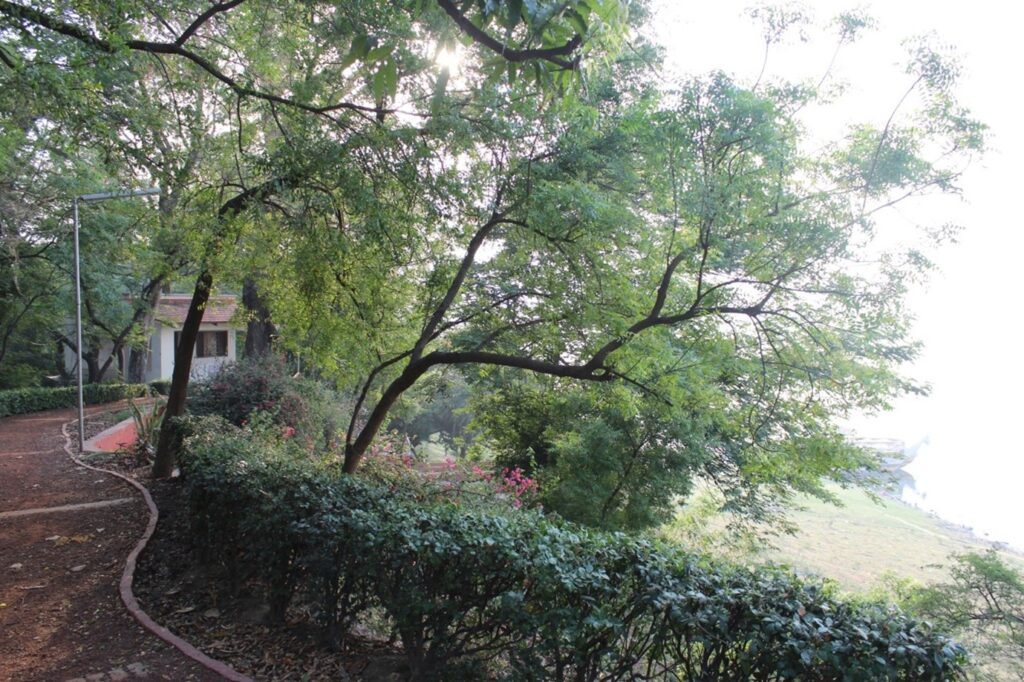 Photo by Aparna Misra
Photo by Aparna Misra
If Krishnamurti’s teachings were subtle and psych altering, Madan Mohan Malviya’s were more grandiose. He wanted to create an institution which would put India on the world map of learning and innovation. Strangely both the educationists owe a great deal to Annie Besant. Malviyaji wanted Indians to take the responsibility of educating themselves. He set out to establish an institution which would change the course of higher learning in India. The semi- circular Banaras Hindu University spread over 1300 acres is a realization of Malviya ji’s dream in brick and mortar which has produced many world class scientists, engineers and humanists.
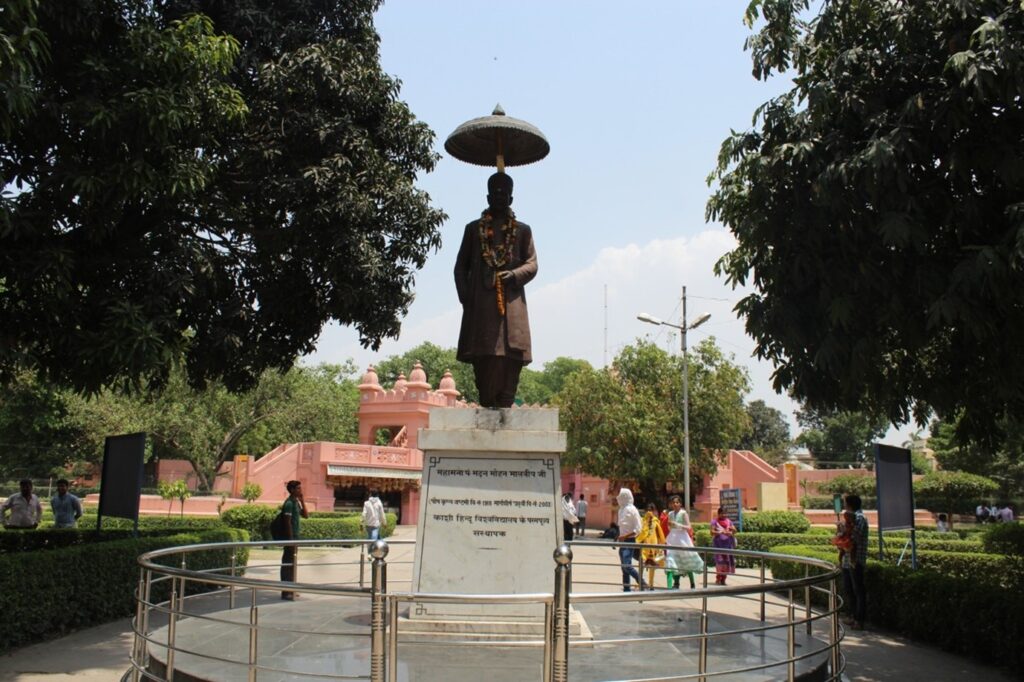 Photo by Aparna Misra
Photo by Aparna Misra
Indeed, his vision inverted the Macaulay’s scheme and gave confidence to Indian students to study modern sciences. The two distinct systems of learning one espoused by Krishnamurti and the other by Mahamana saw fruition here.
Sitting in the central hall of BHU, pouring over the numerous Constituent Assembly Debates, I spotted Dr Radhakrishnan on the pages before my eyes. What was this great president doing in the yellow musty pages in the quiet library? Rubbing my eyes I read carefully, the volume said, Dr Radhakrishnan - Vice chancellor of Banaras Hindu University! Before being elected as the President, this erudite scholar was a teacher, teaching was his passion. He was appointed as the Vice-chancellor of BHU after the resignation of Madan Mohan Malviya.
Dr. Radhakrishnan wanted to be always remembered as a teacher. In his memory, September 5, his birth date is celebrated as Teacher’s Day. On this day we remember the teacher who transformed Radhakrishnan, Krishnamurthy, Mahamana, Kabir, Shankara and Gautama into great teachers.
The much quoted, “Guru Gobind doukhade, kake lagoon paye? Balihari Guru apne Gobind diyobataye.,” was written by Kabir at here. A teacher is more important than God because he is the one who can show us God.
The devotion towards teachers has never been expressed better in any language, at any other time.
Let us pay homage to our teachers and to the city that nourished and sustained teachers, acharyas, gurus, saints and sages who have been our lodestars.

